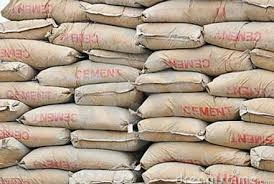Pakistan cement industry has shown remarkable resilience, with exports increasing by 5% during the first seven months of the fiscal year (July 2024 – January 2025). This growth comes as a welcome development for the country’s economy, which has been grappling with challenges such as inflation, energy shortages, and global economic uncertainties. In this blog post, we’ll explore the factors driving this increase, the key markets for Pakistani cement, and the implications for the industry and the economy.
Key Highlights of Cement Export Growth
- Export Volume: Pakistan exported 6.2 million tons of cement during July 2024 – January 2025, up from 5.9 million tons in the same period last year.
- Revenue Growth: Cement export revenue increased by 7%, contributing significantly to the country’s foreign exchange earnings.
- Top Export Markets: Key destinations for Pakistani cement include Afghanistan, India, Sri Lanka, South Africa, and the Middle East.
- Market Share: Afghanistan remains the largest importer, accounting for 45% of total cement exports, followed by the Middle East (30%) and South Asia (15%).

Factors Driving the Increase in Cement Exports
1. Improved Global Demand
The global construction industry has rebounded post-pandemic, driving demand for cement. Countries in the Middle East and Africa, in particular, are investing heavily in infrastructure projects, creating opportunities for Pakistani exporters.
2. Competitive Pricing
Pakistani cement manufacturers have maintained competitive pricing, making their products attractive in international markets. The devaluation of the Pakistani rupee has also helped boost export competitiveness.
3. Government Support
The Pakistani government has introduced policies to support the cement industry, including tax incentives and subsidies for exporters. Additionally, efforts to improve trade relations with neighboring countries have opened new markets.
4. Enhanced Production Capacity
Cement manufacturers in Pakistan have invested in expanding production capacity and improving efficiency. This has enabled them to meet both domestic and international demand more effectively.
5. Regional Infrastructure Projects
Ongoing infrastructure projects in Afghanistan, Sri Lanka, and the Middle East have created a steady demand for Pakistani cement. For example, Afghanistan’s reconstruction efforts have significantly boosted cement imports from Pakistan.
Key Export Markets for Pakistani Cement
1. Afghanistan
Afghanistan remains the largest market for Pakistani cement, accounting for [Insert Percentage]% of total exports. The country’s reconstruction and development projects continue to drive demand.
2. Middle East
Countries like the UAE, Qatar, and Oman are major importers of Pakistani cement, particularly for large-scale infrastructure and real estate projects.
3. South Asia
Sri Lanka and India are emerging as important markets, with increasing demand for construction materials.
4. Africa
South Africa and other African nations are also showing growing interest in Pakistani cement due to its quality and affordability.
Economic Impact of Cement Export Growth
1. Foreign Exchange Earnings
The increase in cement exports has contributed significantly to Pakistan’s foreign exchange reserves, helping stabilize the economy.
2. Job Creation
The cement industry is a major employer in Pakistan, and export growth has led to increased job opportunities in manufacturing, logistics, and related sectors.
3. Industrial Growth
The expansion of cement exports has spurred growth in ancillary industries, such as packaging, transportation, and mining.
4. Trade Balance Improvement
Higher export revenues have helped narrow Pakistan’s trade deficit, providing much-needed relief to the economy.
Challenges and the Way Forward
While the growth in cement exports is encouraging, the industry faces several challenges that need to be addressed to sustain this momentum:
1. Energy Costs
High energy costs remain a major concern for cement manufacturers, as they account for a significant portion of production expenses.
2. Logistics and Transportation
Inefficient transportation infrastructure and high freight costs can erode profit margins for exporters.
3. Global Competition
Pakistani cement exporters face stiff competition from countries like India, China, and Vietnam, which have lower production costs.
4. Environmental Concerns
The cement industry is under increasing pressure to adopt sustainable practices and reduce carbon emissions.
Recommendations for Sustained Growth
1. Invest in Energy Efficiency
Cement manufacturers should invest in energy-efficient technologies to reduce production costs and improve competitiveness.
2. Enhance Trade Infrastructure
The government should prioritize infrastructure development, particularly in transportation and logistics, to support export growth.
3. Explore New Markets
Exporters should diversify their markets by exploring opportunities in regions like Central Asia, Southeast Asia, and East Africa.
4. Adopt Sustainable Practices
The industry should focus on adopting environmentally friendly practices, such as using alternative fuels and reducing carbon emissions, to meet global standards.
Conclusion
The 5% increase in Pakistan’s cement exports from July 2024 – January 2025 is a positive sign for the industry and the economy. By addressing challenges and leveraging opportunities, Pakistan can further strengthen its position as a key player in the global cement market. This growth not only boosts foreign exchange earnings but also supports job creation and industrial development, contributing to the country’s economic recovery and long-term prosperity. Read more about exports.





